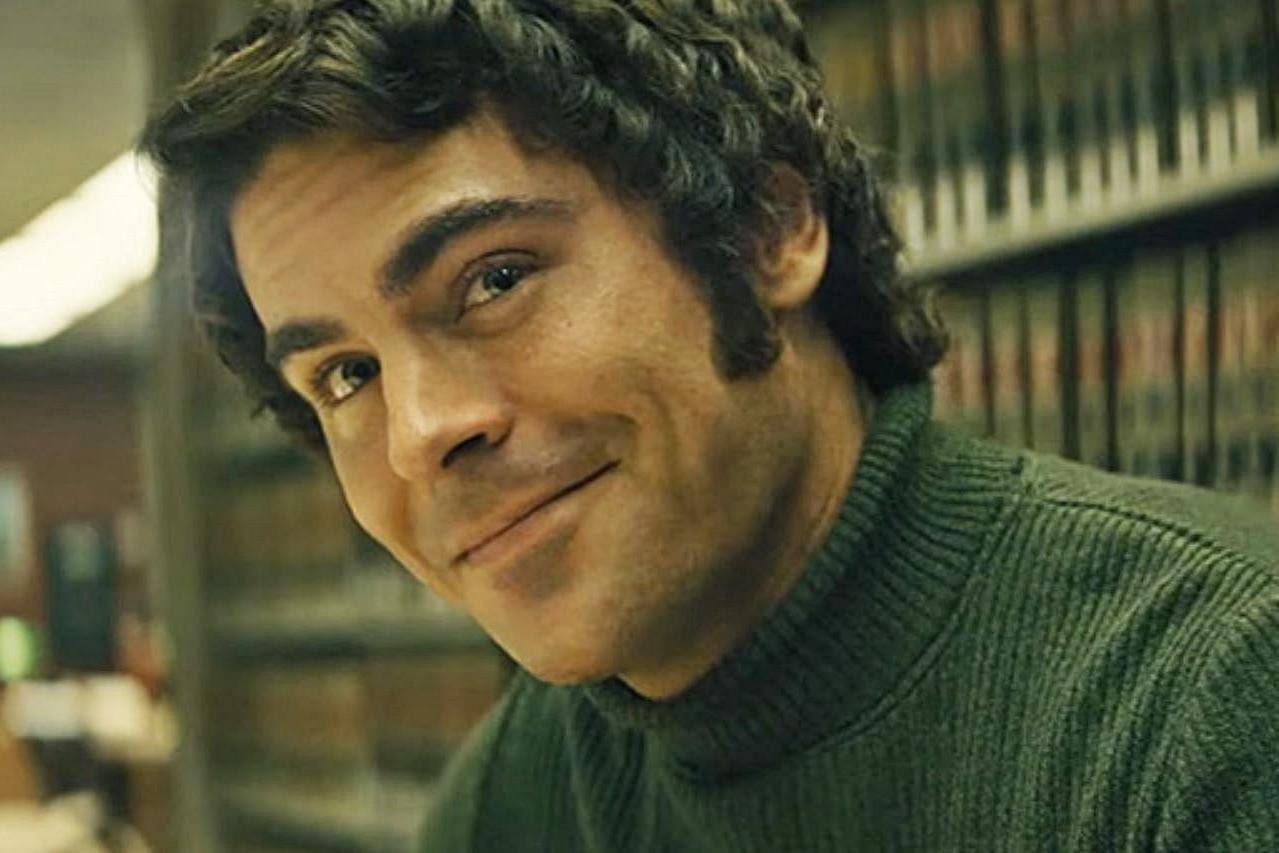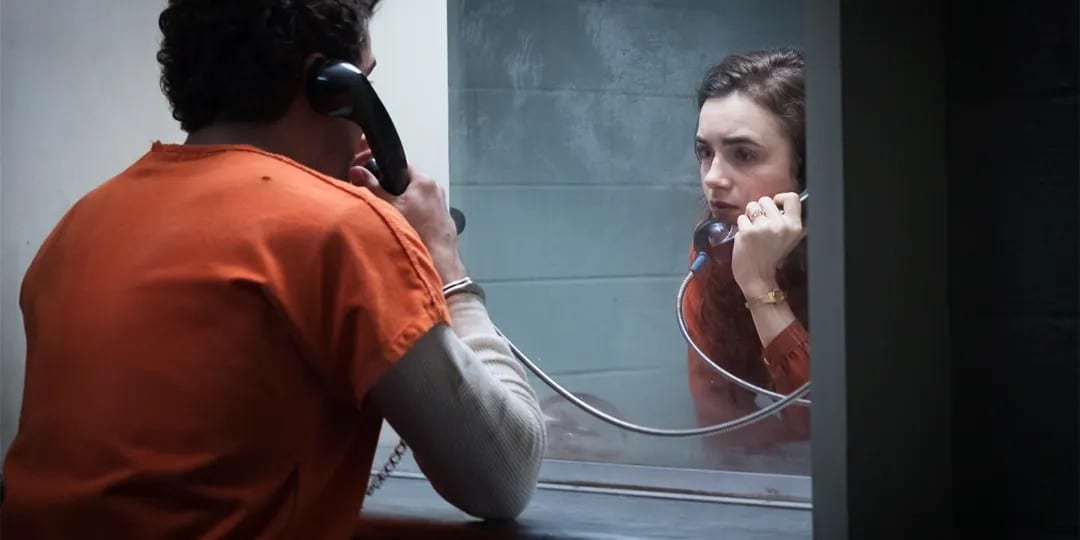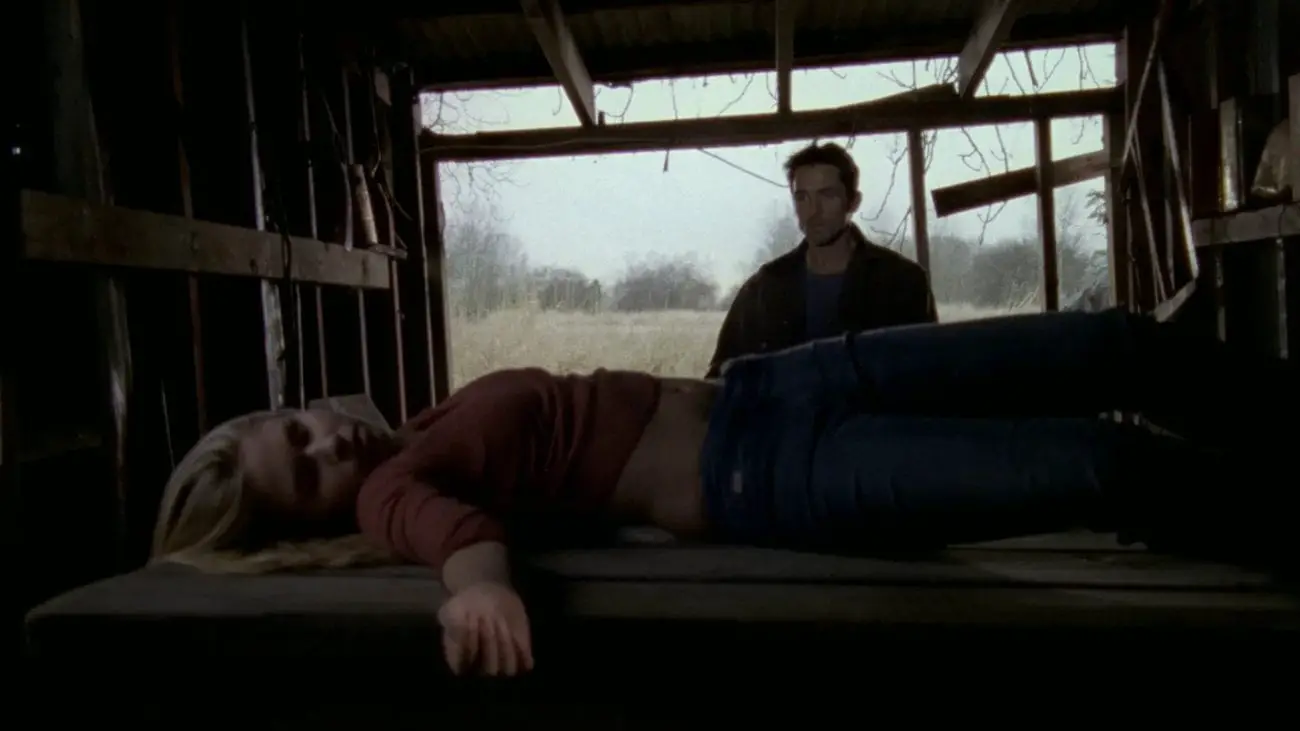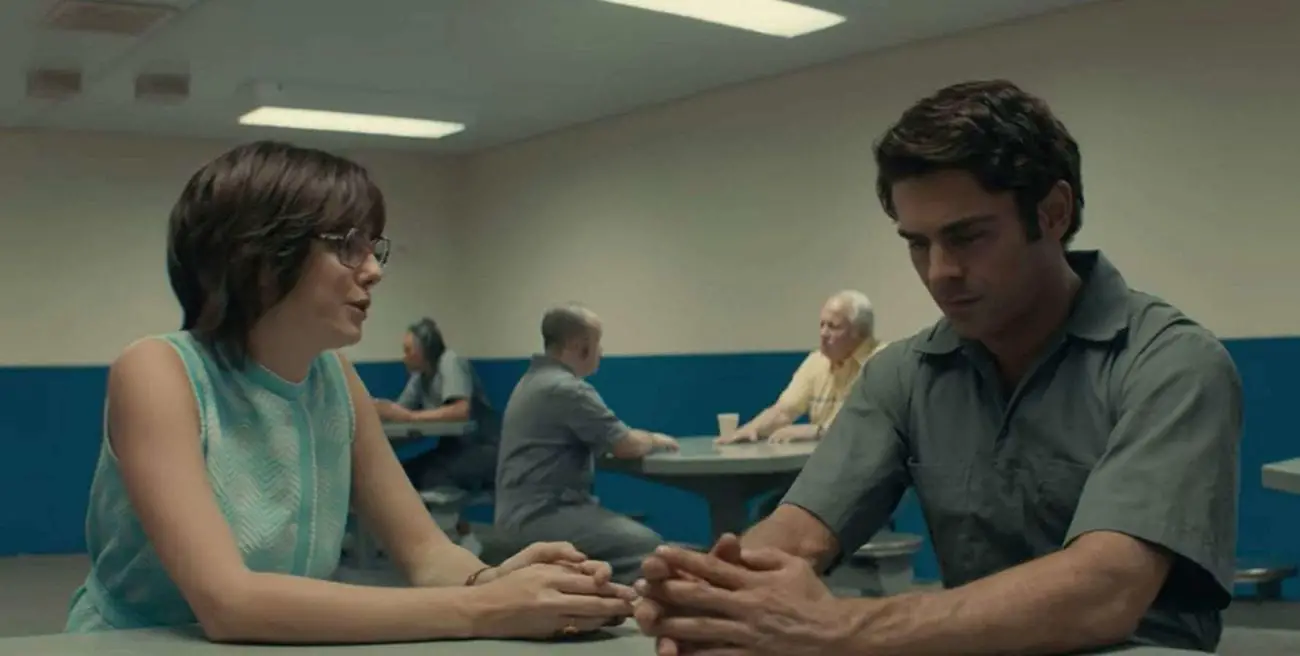
On January 24, 1989, it wasn’t sunrise as usual in Starke, Florida—especially across the street from Florida State Prison. Hundreds of people gathered. There was coffee, donuts, beer, and even fireworks. It was a celebratory atmosphere. People sold t-shirts with the phrase “Fry-Day” on them. They chanted “Burn, Bundy, Burn.” They cheered wildly after receiving word that at 7:16 a.m., Ted Bundy, one of history’s most notorious serial killers was pronounced dead.
There were celebrations all around the United States as Bundy’s last hours drew near. The night before the execution, the Chi Phi Fraternity at Florida State University had an evening cookout. Two of Bundy’s victims, Margaret Bowman and Lisa Levy were students there. The fraternity served “Bundy burgers” and “electrified hot dogs.” They hung a large banner that read “Watch Ted Fry, See Ted Die.” In Mountain Brook, Alabama, two police officers hosted a “Bundy-cue” and sold t-shirts that said, “First Annual Ted Bundy Barbecue.”
Ted Bundy had made an indelible impression on the world. He affected many lives in the worst way imaginable. He had embarked on a killing spree that lasted from the early to late 1970s that took the lives of as many as 30 young women and possibly many more. Not to mention those fortunate women who survived Bundy’s attack—they were left scarred for life.
Bundy received the death penalty for the murders of Florida State University students Margaret Bowman and Lisa Levy and the attempted murders of Kathy Kleiner, Karen Ann Chandler, and Cheryl Thomas in January 1978 and the rape and murder of 12-year-old Kimberly Leach of Lake City, Florida, in February 1978.
Ted Bundy constructed a perfect mask of sanity through the years. Those who knew him say he was a bright, articulate man with a promising future. He was a law student who was an active member of the Republican Party in Washington State. Bundy was the perfect picture of the “guy next-door.” Ralph Munroe, former Secretary of State in Washington State, said, “The Ted Bundy we knew, before there were any accusations, any charges, any arrests or anything, was a very nice guy. He was a friend of ours…we didn’t think he was strange or different.”
Bundy became a pseudo-celebrity after his arrest. Like a rock star, he had groupies who would show up in the courtroom to see him. When interviewed, some of them said that Bundy didn’t look like a murderer. True crime writer and former Bundy co-worker, Ann Rule, said, “He was like a movie star and if he’d look around, they would all giggle and nudge each other. And I thought it never occurs to them that if he were free, and he met them on a dark night, they’re just the type of potential victim he would be looking for.”

Bundy preyed on the kindness of others. He would put his arm in a sling, and he also used crutches. Bundy would approach young women and ask them for help carrying books to his car. Not many resisted, and there are some who survived Bundy. Everywhere Bundy lived women turned up missing—Washington, Utah, Idaho, Colorado and Florida. Some remains were found—others weren’t. Bundy eventually confessed to about 30 murders, but investigators believe there were a lot more.
Most of Bundy’s victims were women in their late teens to early 20s. Bundy’s first victim reportedly survived the attack. No one familiar with Bundy’s case knows for certain when he started attacking women. It’s the consensus that his first attack was on January 4, 1974. Formerly known as Joni Lenz, Karen Sparks Epley has come forward recently to share her experience in a docu-series, Ted Bundy: Falling For a Killer (2020).
Bundy broke into Epley’s basement apartment in Washington State. He attacked as she slept. Bundy sexually assaulted Epley and bludgeoned her with a metal bar from her bed. She was discovered 18-20 hours later. She woke up in a hospital unable to remember exactly what happened. “He came into my home took a bed frame off of my bed, and smashed my skull,” Epley said. Epley suffered permanent brain damage including partial vision and hearing loss.
After the attack on Epley, young women in Washington State began to disappear—at least once a month from February to July 1974. These are all confirmed victims of Bundy. Most of them were college students in Washington State: February.- Lynda Ann Healy, 21, March – Donna Gayle Manson,19, April – Susan Elaine Rancourt, 18, May – Roberts “Kathy” Parks, 20, June – Brenda Carol Ball, 22 and Georgann Hawkins, 18 and July – Janice Anne Ott, 23, and Denise Naslund,19.
Bundy abducted Ott and Naslund on the same day at Lake Sammamish State Park. These abductions were also pivotal because there were eyewitnesses. People visiting the lake that day reported seeing a man who identified himself as “Ted” hanging around the park. Witnesses said the man’s arm was in a sling and he was asking for help.
Before the murders began, Bundy was a student at the University of Washington and graduated in 1974 with a degree in psychology. During his junior year, he met and fell in love with a woman named Diane Edwards (formerly known as Stephanie Brooks). She was everything Bundy wanted — well-to-do with class and influence. He described her as: “…a beautiful dresser, beautiful girl. Very personable. Nice car, great parents.” She wasn’t as impressed with Bundy. Edwards felt that he lacked ambition and broke up with him. Bundy was reportedly devastated by the break-up. It’s often pointed out that many of Bundy’s victims resembled Edwards—women in their late teens to early 20s with long dark hair parted in the middle.

Bundy had his revenge years later. He had dropped out of college and went back to school. He also became an active member of the Republican Party and worked on a gubernatorial campaign for Republican governor Dan Evans. Bundy also began a relationship with a divorced single mother named Elizabeth Kendall.
After graduating with a degree in psychology, while still dating Kendall, Bundy rekindled his relationship with Edwards. She agreed to marry the new and improved Bundy. He broke up with Edwards after their engagement. “I just wanted to prove to myself that I could have married her,” Bundy said.
Let’s backtrack to Lake Sammamish and the description published in the paper. The article described a man named “Ted” with his arm in a sling who drove a Volkswagen. Elizabeth Kendall, Bundy’s girlfriend, saw the article in the paper with a composite sketch of “Ted.” The details matched Bundy, who always drove a Volkswagen. She took note of the detail about the sling. While Bundy’s arm was perfectly fine, she recalled seeing plaster of Paris in his desk.
“He said that a person never could tell when he was going to break a leg, and we both laughed. Now I keep thinking about the cast the guy at Lake Sammamish was wearing—what a perfect weapon it would make for clubbing someone on the head,” she wrote in her book, The Phantom Prince: My Life with Ted Bundy (1981, 2020).

Kendall contacted the authorities twice about Bundy. The first time, she called the Seattle Police Department on August 8, 1974. She found crutches in Bundy’s room and read in the newspaper that “Ted” had reportedly attacked a victim with crutches. “You need to come in and fill in a report. We’re too busy to talk to girlfriends over the phone,” the police department said.
Two months later, she called King County Police. The department told Kendall that they checked Bundy out and he was cleared. At that time, Bundy had moved to Utah. In the fall of 1974, Bundy was starting law school at the University of Utah. Young women started to disappear there. Utah would also be the beginning of the end for Bundy.
In October 1974, Bundy abducted two young women in Utah, Melissa Smith and Laura Ann Aime, both age 17. On November 8, 1974, Bundy met his match in 18-year-old Carol DaRonch. Bundy approached DaRonch at the Fashion Place Mall in Murray, Utah.
A man who identified himself as a police officer approached DaRonch and showed her a very convincing badge. He told DaRonch that someone had broken into her car. There were some things that were odd about the “officer.” The officer told her that she needed to come with him to a police substation. He smelled like alcohol and was driving a Volkswagen Bug instead of a patrol car.
DaRonch went with Bundy. She got in his now-infamous Volkswagen Bug and knew something was up when he pulled over near an elementary school. Alarm bells went off in mind. She noticed that there was no handle on the passenger side door. Bundy slapped a pair of handcuffs on her and threatened to kill her.
“I just fought with all my life,” she recalled many years later. DaRonch escaped and went to the police. Unfortunately, Bundy abducted and killed, Debra Jean Kent only a few hours after DaRonch’s escape. Thanks to DaRonch reporting the attack, Bundy would soon be the one with handcuffs on his wrists.

Police contacted DaRonch a few months later to tell her that they arrested a man matching her description. They asked her to view lineup and she identified Bundy as her attacker. Bundy was convicted and received one to 15 years in jail.
Besides the conviction for DaRonch’s attack, Bundy was facing a murder charge in the death of a Colorado woman, 23-year-old Caryn Eileen Campbell who vanished in January 1975. He was planning on defending himself in the case. While in the courthouse library, Bundy managed to escape custody through a window. Police caught up with Bundy eight days later.
It would later be confirmed that Bundy killed four more women in addition to Campbell before being pulled over and arrested in Utah: Julie Cunningham, 26, and Denise Lynn Oliverson, 24, both of Colorado. In May 1975, he abducted and killed Lynette Dawn Culver,12, also in Colorado and Susan Curtis, 15, of Utah, in June 1975.
Incarcerated once again, Bundy decided it was time to lose some weight. It wasn’t for his big day in court but to fit through a hole Bundy managed make in the ceiling of his cell. Thirty pounds later, he escaped in December 1977. This time Bundy was gone 15 hours before police knew he was missing.
Bundy made his way to Tallahassee, Florida. He picked up where he left off. Bundy’s first target was Chi Omega Sorority House at Florida State University. Bundy broke into the sorority at 3 a.m. on January 14, 1978. He attacked four young women at the sorority house—two survived. Bundy attacked and killed Lisa Levy, 20, and Margaret Bowman, 21. Karen Ann Chandler and Kathy Kleiner survived with severe injuries. After leaving the sorority house, Bundy broke into an apartment and assaulted Florida State student Cheryl Thomas. She survived. On February 9, 1978, Bundy abducted and killed 12-year-old Kimberly Diane Leach.

Bundy was arrested on February 15, 1978 in Pensacola, Florida, after an officer observed him driving erratically, checked the vehicle plates, and found out it was a stolen vehicle. Bundy tried resisting arrest and produced a stolen ID. Two days later, Bundy told police his true identity.
On July 24, 1979, Bundy was convicted of the Levy and Bowman murders as well as the attempted murder of Kleiner, Chandler, and Thomas. He received the death penalty. In February 1980, Bundy was convicted of the murder of Kimberly Leach and again received the death sentence.
What was Ted Bundy’s background and upbringing like? He was obviously severely disturbed. It would take more than being rejected by a college sweetheart to warp someone’s mind to such an extent. Now that we’ve explored Bundy’s crimes and the events surrounding them, let’s take a look at Bundy’s life before the 1974 killings started. Let’s start at the beginning.
Bundy was born Theodore Robert Cowell on November 24, 1946 in a home for unwed mothers in Burlington, Vermont. His mother, Eleanor Louise Cowell (who was known as Louise), was a single 22-year-old woman from Philadelphia. Louise’s father, Sam Cowell, wanted Louise to move back home to Philadelphia with the baby instead of giving him up for adoption. His family told him that his mother was his sister and that his grandparents were his parents.
Bundy’s father’s identity remained uncertain throughout his life. There are two names mentioned: Lloyd Marshall, a Penn State graduate and United States Air Force veteran and a man named Jack Worthington. There’s also a theory that Bundy’s father may actually have been his grandfather.
Described as a violent man, Sam Cowell had a white-hot temper who lost it with family, employees and even animals. He’s also described as a misogynist and a racist. Bundy’s grandmother reportedly suffered from depression and agoraphobia and at one point received electroshock therapy.

Bundy’s behavior as a child was abnormal. His aunt, Julia, described waking up to find 3-year-old Bundy placing knives around her as she slept. In an interview with Vanity Fair, she said, “I remember thinking at the time that I was the only one who thought it was strange. Nobody did anything.”
Psychiatrist, Dr. Dorothy Otnow Lewis, who examined Bundy during his trial, commented on Bundy’s behavior in the same article, saying that he exhibited behavior seen “only in very seriously traumatized children who have either themselves been the victims of extraordinary abuse or who have witnessed extreme violence among family members.” Although Bundy recalled having a close relationship with his grandfather, it’s certainly possible that, he too, was a target. He would later tell co-worker and future crime writer, Ann Rule, that he respected and identified with his grandfather.
When Bundy was 3-years-old, his mother moved from Philadelphia to Tacoma, Washington, to live with a relative. She also changed Bundy’s surname from Cowell to Nelson. Louise met Army hospital cook, Johnny Bundy, in 1951 and he proved to be a loving husband. After Louise married Johnny Bundy, he adopted Ted.
Louise and Johnny had four children together. Ted didn’t accept his stepfather and refused to take part in family outings or have a relationship with him. Ted was reportedly materialistic and looked down on his stepfather for being working class.
Sandi Holt, who grew up with Bundy said that, as a child, Bundy’s classmates picked on him for having a speech impediment. He didn’t do very well as a Boy Scout. He also tried out for the basketball and baseball teams at school and was disappointed when he didn’t make the cut. Bundy wasn’t one of the popular kids but described as a loner who had only gone on one date. “It wasn’t that I disliked women or were afraid of them, it was just that I didn’t seem to have an inkling as to what to do about them,” Bundy said years later.

Socially, his behavior was bizarre. A Boy Scout recalled that Bundy once snuck up behind him to hit him in the head with a stick. Holt recalled that he “liked to scare people.” She said that he would make traps for people to fall into—holes in the ground filled with snakes and covered by vegetation. She said she knew of one girl who injured her leg in one of the traps.
Although he wasn’t an exceptional student, he enjoyed the academic more than the social aspect of high school. In a prison interview, he said, “Your performance is measured by different rules than what happens when everybody’s peeling off into little cliques down the hallway.”
Bundy eventually found out about his illegitimacy during his teen years. The accounts differ about how this happened. He saw a copy of his birth certificate where his father is designated as “unknown.” Ex-girlfriend, Elizabeth Kendall, said that when he found out he felt humiliated and this caused resentment toward his mother.
During adolescence, Bundy began to show predatory and criminal behavior as a peeping tom and shoplifter. He once tried to steal a car and got only a warning instead of arrested. It also is believed that Bundy killed his first victim when he was 14 years old.
On the night of August 31, 1961, Ann Marie Burr disappeared from her family’s home in Tacoma, Washington. Her disappearance has never been solved. Her family was home at the time of her disappearance. All police found at the scene was a footprint and the front door unlocked. Ann Marie’s mother thought that her daughter may have known whoever took her.
Bundy lived a few miles away. He had an uncle that lived near the Burrs and a paper route that may have taken him through their neighborhood. Ann Marie’s mother wrote to Bundy years later as he sat on death row to ask if he abducted her daughter. Bundy denied it. The evidence found in the Burr case was re-examined in 2011. There wasn’t enough DNA evidence to compare to Bundy’s profile.

Bundy’s life on death row wasn’t uneventful. During his trial, he married co-worker Carole Anne Boone who believed Bundy was innocent. Boone was a divorced single mother with a son, James. Bundy and Boone met as co-workers at the Washington State Department of Emergency Services in 1974. The pair maintained a platonic relationship until Bundy’s trial in 1979. Bundy married Boone in the courtroom when she took the stand as a character witness. Bundy took advantage of a law that says that if a couple makes a marriage vow before a judge—they’re legally married.
Boone also gave birth to Bundy’s child, a daughter named Rosa, in October 1981. Bundy wasn’t allowed conjugal visits but guards reportedly didn’t enforce the rules. Sex was possible in many areas in the visiting room (behind the water cooler, etc.). “After the first day they just, they didn’t care,” Boone said. “They walked in on us a couple of times.” Boone divorced Bundy in 1986. Her and Rosa’s whereabouts are unknown.
What does a professional have to say about Bundy? Let’s go back to Dr. Dorothy Otnow Lewis. Dr. Otnow Lewis examined Bundy during his trial for his defense. She thought that Bundy’s early withdrawal and refusal to take part in family activities was indicative of a serious mental illness. She believes that Bundy may have had bipolar mood disorder, characterized by sudden and sometimes violent mood swings.
She’s not the only professional to think so. Other psychiatrists involved in Bundy’s case believed he exhibited signs of a mood disorder. One example is an investigator who said that Bundy’s demeanor completely changed for 20 minutes. Bundy couldn’t seem to remember the mood change.
There are so many factors to consider with Bundy. From his first breath, he was on unstable ground. His grandmother suffered from depression and even received electroshock therapy. His grandfather was abusive and violent. Is it possible mental illness was passed on to Bundy genetically? Bundy was only 3 years old when he placed the knives in his aunt’s bed. Before he was fully aware of what social behavior was, his was extremely abnormal.
The environment the Cowells created with his grandmother’s bouts of depression and his grandfather flying into a rage was toxic. Add into the mix the lie his family told him—that his mother was his sister. Add in humiliation and bullying from classmates in elementary school. There was also the rejection by his college girlfriend. At the same time, he did lash out against those who were humiliating him—the classmates who bullied him. Bundy also got his revenge on Diane Edwards. Inherited mental illness plus toxic home life and additional issues socially would all combine into a recipe for dysfunction.
No one can say for certain what could cause a person to kill. Anyone could point out that not all children raised in a toxic situation turn out to be serial killers. One simple factor couldn’t be the cause of such tragic events. Perhaps, Bundy was psychology’s version of a perfect storm.



